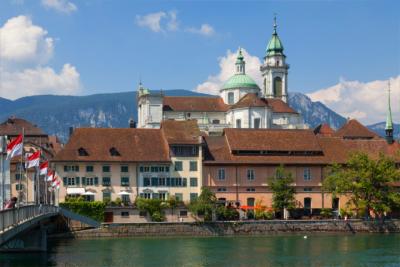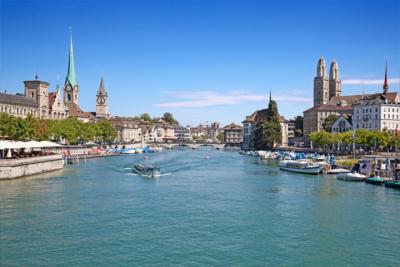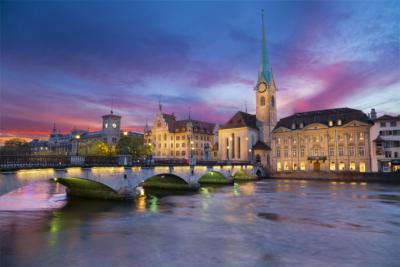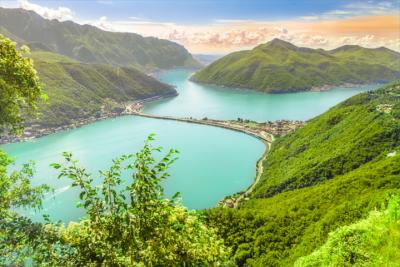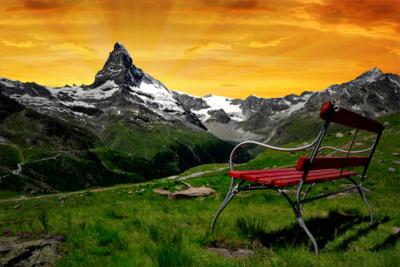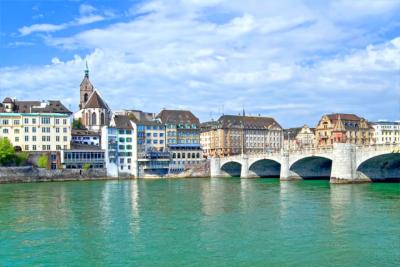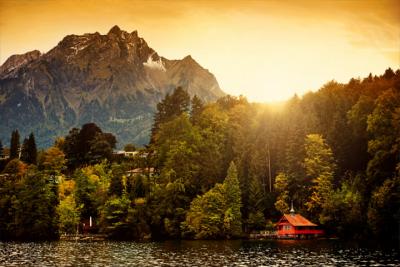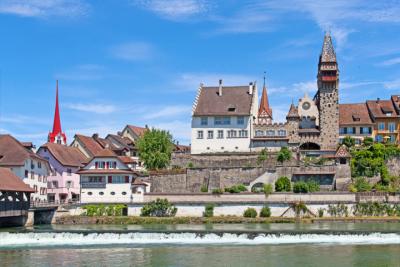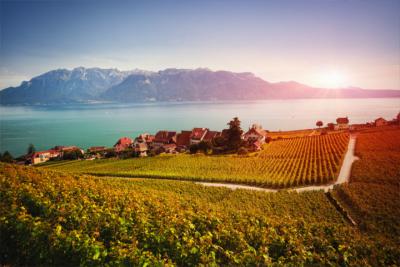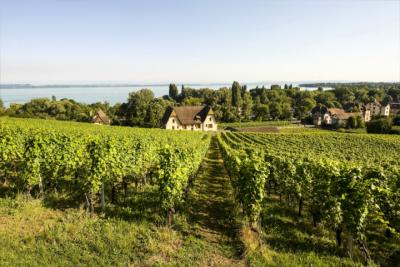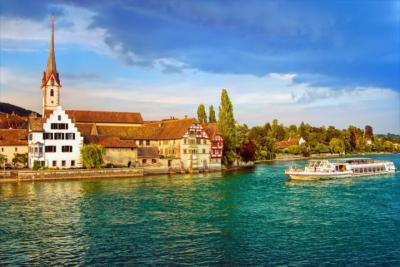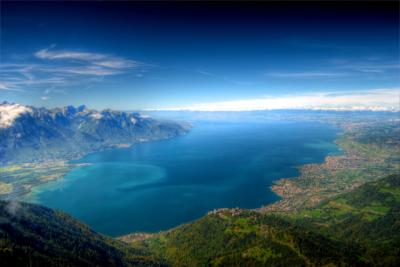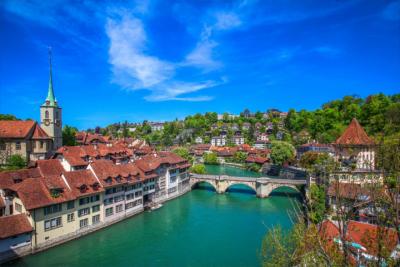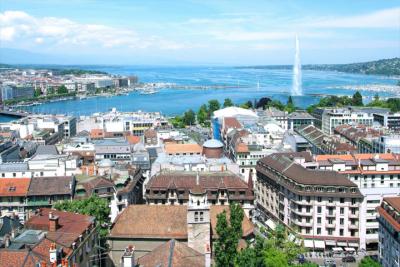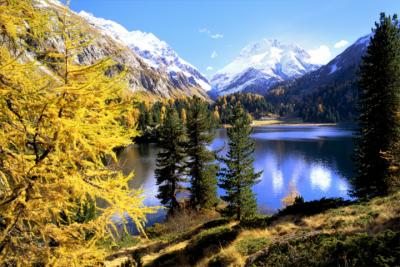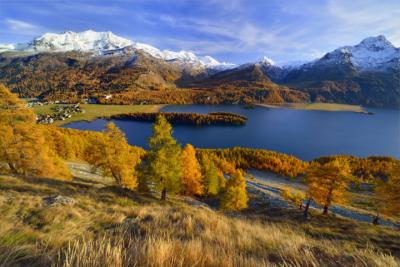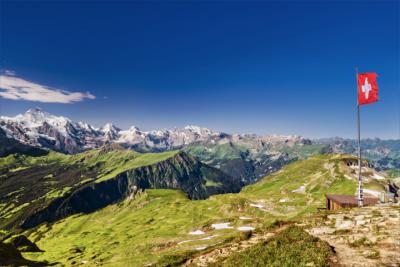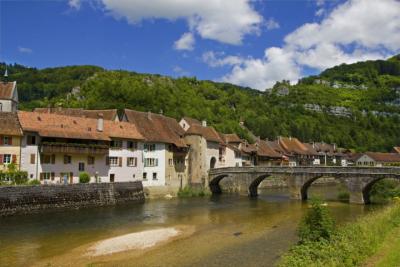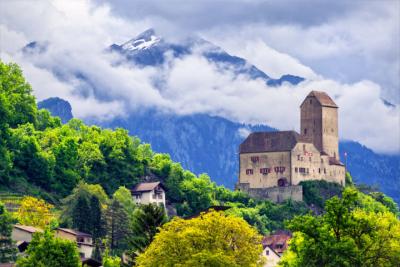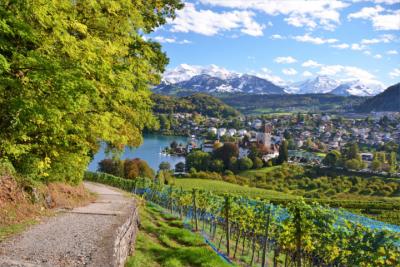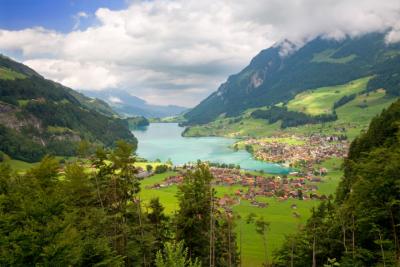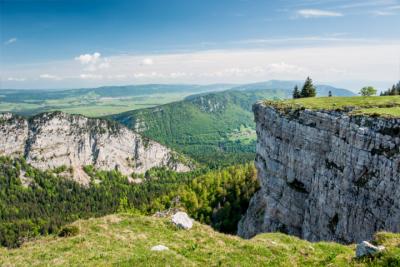Travel Offers
Travelmyne Featureprint
Distance
Bernese Oberland - Majestic Mountains and Scenic Valleys
What better way to spend your holidays than in the majestic Alps of the Bernese Oberland? Besides the great variety of sporting activities in summer and winter, you can experience the thrill of adventure and extreme sports or enjoy the region's many spa facilities.

Geography - High mountains and great valleys
The Bernese Oberland is a popular tourist region in Switzerland. It lies in the south of the Canton of Bern and refers to the higher areas around Lake Thun and Lake Brienz as well as the valley south of these lakes up to the border of the Canton of Valais. The region is visited by holidaymakers in both summer and winter. Although the city of Thun is called the gate to the Bernese Oberland, the most common starting points for travellers are Spiez and Interlaken. While several tourist towns are located in the hollows of the valleys (e.g. Grindelwald, Adelboden and Lenk), others lie on the so-called valley terraces (e.g. Hasliberg and Wengen). Many towns are also located on the banks of Lake Thun and Lake Brienz, for example Brienz, Bönigen and Merligen. The summers in the region are mostly hot and the winters are particularly rich in snow. Thanks to the many hours of sunshine, the temperatures in the valleys are mild most of the time, so that they are great locations for bathing holidays.

Nature - Smooth mountain meadows and wild glaciers
The Bernese Oberland can be divided into two areas: the northern and the southern pre-Alpine zone. While the massifs in the northern zone do not exceed a height of 3,000 metres, the mountains in the southern zone are over 4,000 metres high. You also find the one of the regions of the Swiss Alps which is covered in glaciers here, the Jungfrau-Aletsch protected area, which is part of the World Natural Heritage of the UNESCO. Some of the best-known and highest mountains are the Finsteraarhorn (4,274 m), the Eiger (3,970 m), the Mönch (4,107 m), the Jungfrau (4,158 m) and the Wetterhorn (3,701 m). You can often see Alpine ibexes there. The valleys, on the other hand, are covered in smooth meadows and pastures, on which you can see cows browsing. In addition, vast, dark green forests and scenic lakes dominate the region's scenery. Popular lakes are Lake Thun, Lake Brienz and the Blausee. True highlights are the majestic waterfalls in the Bernese Oberland.

Culture - Magnificent castles along the waterfront
The region owes its name to Napoleon, who founded the Canton of Oberland in 1798. However, he already changed his mind in 1803 and reunited the Oberland with the Canton of Bern. Despite the reincorporation, the inhabitants of the Oberland kept their own identity. This becomes apparent during numerous traditional celebrations such as the Chästeilet (at which cheese is distributed among the farmers), the Dorfsonntag or the Trachtenfest (a festival with traditional costumes). The language spoken in the Bernese Oberland is German but an Upper German dialect (Allemanic) is also used. There is a number of wonderful sights which should not be missing from anyone's holiday plan. Among them you find many cultural buildings such as the castles in Hünegg, Oberhofen, Schadau, Spiez and Interlaken. The open-air museum in Ballenberg and the Sherlock Holmes Museum in Meiringen are equally interesting. Thun's old town with the Scherzlingen Church, the Thun Panorama and the town hall from the 16th century is also worth a visit. Visitors should definitely not miss out on a ride on one of the many cable cars, gondola cableways or chairlifts, which offer a fascinating view of the region's majestic mountains.

Experience - Idyllic holiday resorts and Europe's highest situated station
The Bernese Oberland fascinates its travellers in the wink of an eye. While the many scenic valleys are characterised by cordiality and comfort, typical holiday resorts like Gstaad and Interlaken attract with class and various opportunities of entertainment and recreation (e.g. in spas). Most visitors come to the region because of its mountains, others because of the wonderful valleys and lakes, whose banks are decorated with beautiful chalets, guest houses, hotels and castles. Holidaymakers of the Bernese Oberland can go on a ride with the Jungfrau railway to the Jungfraujoch, where they find the highest situated station in the whole of Europe (Top of Europe) at a height of 3,454 metres. A great shopping destination is the city of Thun. The main shopping street Bälliz is located on a small island in the middle of the Aare. In the south of the city, you find the shopping centre Zentrum Oberland, which has a wide range of goods. As for the nightlife, you find bars almost everywhere and there are discos in the popular holiday resorts.

Activities - Pure thrill
The Bernese Oberland is the perfect destination for active holidays. There is a lot you can do in both winter and summer. Travellers can go on boating or sailing tours on the lakes or go swimming in summer. The mountains offer excellent conditions for all kinds of winter sports in winter such as skiing, snowboarding, tobogganing, ice climbing and ski sailing. Adelboden and Wengen host the Alpine Ski World Cup every year. The Lauberhorn downhill course in Wengen is the longest one on earth. In summer, you can go hiking, climbing, mountaineering, mountain biking and golfing. Travellers who are looking for a thrill also get their moneys's worth here. The possible activities range from paragliding, bungee jumping and rafting to skydiving and canyoning. One popular starting point for these sports is Interlaken. Holidaymakers who prefer the calm to forget about their stressful everyday life can relax on the back of a horse, visit one of the many spas or unwind in a heated outdoor or indoor swimming pool.

Information
Travellers best arrive in the Bernese Oberland by plane at the international airports in Bern, Basel, Zurich or Geneva. By car, you easily reach the region on the well-developed motorways A1, A2 or A6, depending on which direction you are coming from. The mountain crest of the Alps constitutes a barrier for journeys into the south. While the Brünig Pass is open to traffic all year, the Susten and Grimsel Pass are only opened in summer. An arrival by train is also possible. There are direct connections to the popular holiday regions from a number of big European cities.
A trip to the Bernese Oberland is not only an exciting adventure for lovers of nature and active holidaymakers but also an unforgettable experience for lovers of culture and spa tourists. In the middle of gigantic wild mountains, you find places of calm and relaxation in the green valleys and at the blue lakes.

